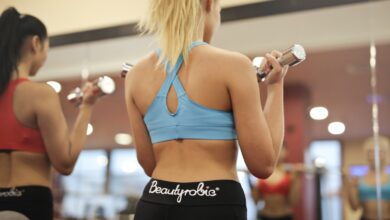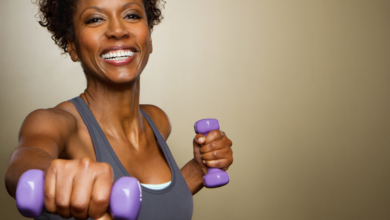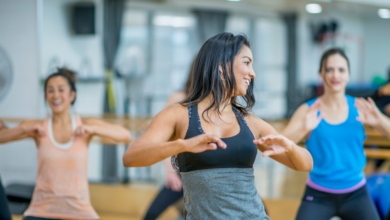
You’ve probably heard the buzz about HIIT workouts, and it’s no wonder why they’re gaining so much popularity. In this article, we’ll explore the rise of HIIT (High-Intensity Interval Training) and uncover why these intense workouts are known to work wonders for your fitness goals. From boosting your metabolism to time-efficient workouts, get ready to discover the amazing benefits of incorporating HIIT into your exercise routine.
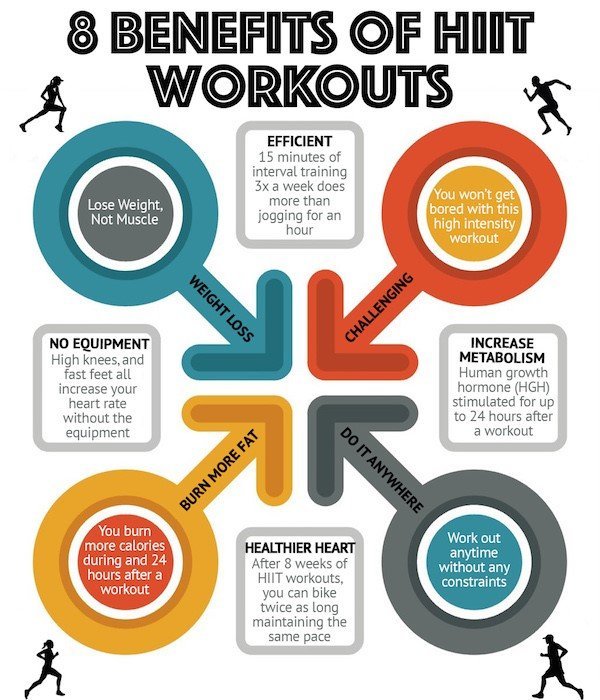
Benefits of High-Intensity Interval Training (HIIT)
Increased calorie burn
One of the major benefits of HIIT is its ability to significantly increase calorie burn. During a high-intensity interval training workout, you engage in short bursts of intense exercise followed by short periods of rest or lower intensity activity. This alternating pattern not only keeps your heart rate elevated and your muscles engaged, but it also raises your metabolic rate, causing your body to continue burning calories even after your workout is over. This phenomenon is known as the “afterburn effect” or excess post-exercise oxygen consumption (EPOC). So, even though the actual workout time might be shorter than other forms of exercise, HIIT can help you burn more calories in less time.
Improved cardiovascular fitness
Engaging in high-intensity interval training can lead to significant improvements in cardiovascular fitness. When you push your body to its limits during intense exercise, your heart has to work harder to deliver oxygen and nutrients to your muscles. This constant challenge strengthens your heart muscle, increases its endurance, and improves its overall efficiency. Over time, regular HIIT workouts can enhance your cardiovascular fitness, allowing you to perform everyday tasks with greater ease, and reducing the risk of developing heart-related diseases.
Time-efficient
We live in a fast-paced world where time is a precious commodity, making it difficult to find hours for exercise in your busy schedule. This is where HIIT stands out as an effective solution. With HIIT, you can achieve maximum results in a short amount of time. Traditional exercises often require long durations of steady-state activity, but with HIIT, you can achieve the same if not better results in just 20 to 30 minutes. By incorporating short, intense bursts of exercise into your routine, you can save time without compromising the effectiveness of your workout.
Can be performed anywhere
One of the great things about HIIT is its versatility and convenience. You can perform high-intensity interval training workouts anywhere, whether it’s at home, in a gym, or even outdoors. You don’t need fancy equipment or a large space. Bodyweight exercises such as squats, lunges, push-ups, and burpees can be your go-to exercises for a HIIT session. Additionally, you can also use simple items like resistance bands or dumbbells to add resistance to your workouts. The flexibility of HIIT allows you to adapt your workouts to fit your surroundings, making it accessible to everyone.
Builds and preserves muscle mass
Contrary to popular belief, high-intensity interval training is not just about burning calories and improving cardiovascular health. It is also an excellent way to build and preserve muscle mass. During intense exercises like weightlifting or sprinting, your muscles are put under significant stress, forcing them to adapt and become stronger. The bursts of high-intensity exercise in HIIT workouts ensure that your muscles are continuously challenged, leading to muscle growth and development. By incorporating strength exercises into your HIIT routine, you can achieve a balanced workout that not only burns fat but also helps you build a toned and strong physique.
The Science Behind HIIT
Elevated heart rate and oxygen consumption
When engaging in high-intensity exercise, your heart rate increases and your body demands more oxygen to supply to your working muscles. This elevation in heart rate and increased oxygen consumption is essential for improving cardiovascular fitness, as mentioned earlier. The intense nature of HIIT workouts pushes your heart to pump more blood, and in turn, increases the amount of oxygen transported throughout your body. This not only strengthens your heart and lungs but also helps improve the efficiency of your body’s oxygen utilization.
EPOC: Afterburn effect
One of the unique aspects of HIIT is the excess post-exercise oxygen consumption (EPOC) effect, commonly known as the afterburn effect. EPOC refers to the increased oxygen consumption that occurs after exercise as your body works to restore its oxygen levels, replenish energy stores, and repair damaged muscle tissue. HIIT workouts, with their intense bursts of exercise, create an oxygen debt in your body that needs to be repaid after your workout is over. This post-workout recovery process leads to an increased caloric burn for hours, or even up to 24-48 hours after your workout ends.
Hormonal response
Another fascinating aspect of HIIT is its effect on hormones. During intense exercise, your body releases various hormones, such as adrenaline and cortisol, which help mobilize energy stores and increase your overall energy expenditure. This hormonal response plays a significant role in fat metabolism and can help you burn more calories during and after your HIIT workout.
Increase in mitochondrial capacity
Mitochondria are the powerhouses of your cells, responsible for producing energy (ATP). Regular HIIT workouts have been found to increase the number and activity of mitochondria in your muscle cells. This increase in mitochondrial capacity enhances your body’s ability to produce energy efficiently, leading to improved endurance and performance. When your mitochondrial capacity improves, you’ll notice increased stamina and a decreased perception of fatigue during both exercise and daily activities.
Improved glucose metabolism
HIIT workouts have also been shown to improve glucose metabolism in the body. When you engage in high-intensity exercise, your muscles require more energy, and this energy often comes from stored glucose (glycogen). Over time, regular high-intensity interval training can improve your muscles’ ability to utilize glucose, contributing to better blood sugar regulation and reduced insulin resistance. This is particularly beneficial for individuals with or at risk of developing type 2 diabetes.
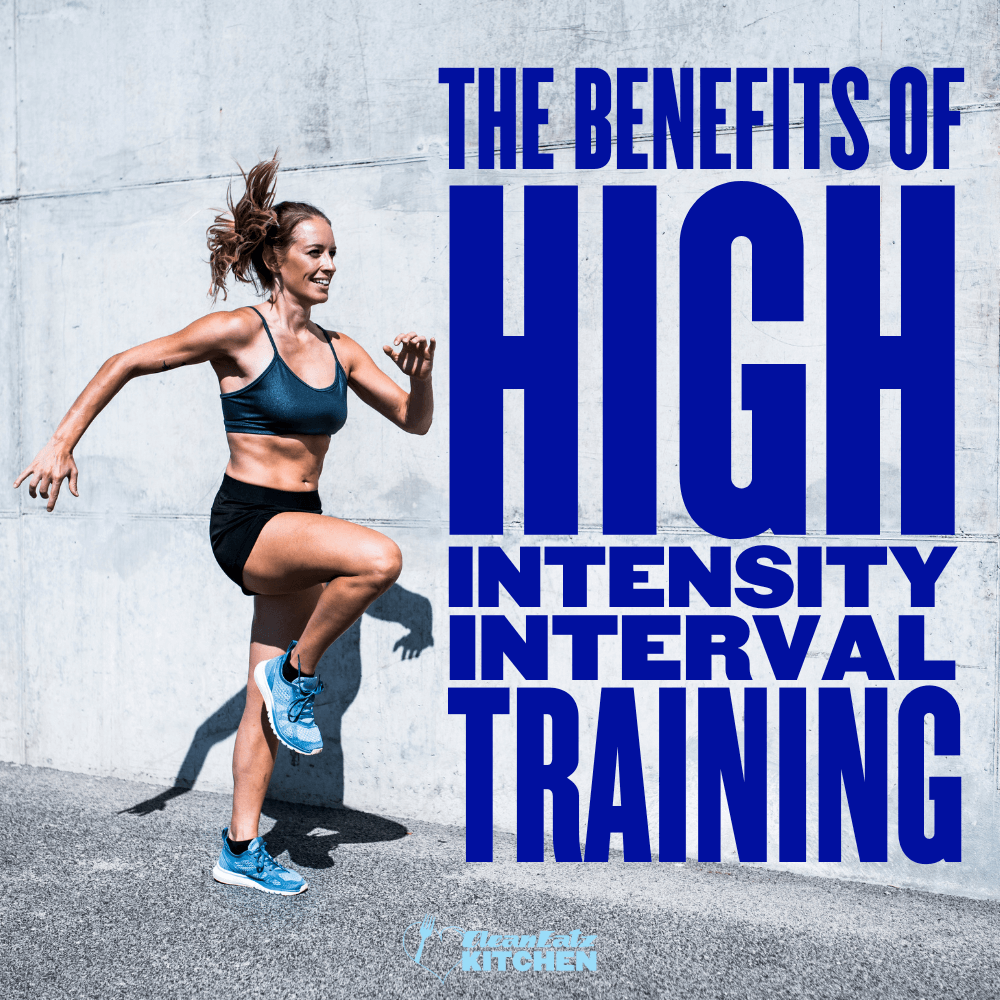
Customizing HIIT Workouts
Choosing the appropriate exercises
One of the key factors in creating a successful HIIT workout is choosing exercises that target different muscle groups and involve a mix of cardiovascular and strength-training movements. This combination ensures that you are not only burning calories but also working on building strength and endurance. Some popular exercises for HIIT workouts include burpees, mountain climbers, jump squats, high knees, and push-ups. It’s important to select exercises that you enjoy and can perform with proper form.
Determining work-to-rest ratio
The work-to-rest ratio is a crucial aspect of designing a HIIT workout. It determines the length of the high-intensity exercise intervals and the duration of the rest or recovery periods. The ratio can vary based on your fitness level, goals, and the intensity of the exercises you choose. A common starting point is a 1:1 ratio, where the high-intensity exercise lasts for 30 seconds and is followed by 30 seconds of rest. As you progress, you can increase the work intervals while decreasing the rest intervals to increase the overall intensity of your workouts.
Progressing intensity over time
To continue reaping the benefits of HIIT, it’s important to progressively increase the intensity of your workouts over time. This can be achieved by increasing the duration or the number of high-intensity intervals, reducing the rest periods, or incorporating more challenging exercises. By gradually increasing the demands on your body, you ensure ongoing improvements in your fitness levels and continue challenging your muscles for optimal results.
Modifying for individual fitness levels
One of the significant advantages of HIIT is its adaptability to different fitness levels. Whether you are a beginner or an advanced athlete, you can customize your HIIT workouts to suit your capabilities. Beginners may need to start with shorter work intervals and longer rest periods, allowing their bodies to gradually adjust to the demands of high-intensity exercise. As your fitness improves, you can gradually increase the intensity and duration of your intervals. It’s crucial to listen to your body and progress at a pace that is comfortable and safe for you.
Considering injury prevention
While HIIT can be highly effective, it is important to prioritize injury prevention. Due to the high-intensity nature of these workouts, there is an increased risk of muscle strains, sprains, or joint injuries if proper form and technique are not maintained. To reduce the risk of injury, make sure to warm up adequately before each HIIT session and cool down properly afterward. Additionally, focus on maintaining proper form throughout your exercises and be mindful of any discomfort or pain. If you experience any persistent pain or discomfort, it’s essential to consult a healthcare professional or a certified trainer for guidance.
Sample HIIT Workout Routines
Tabata: The Classic HIIT Protocol
Tabata is a popular HIIT protocol that involves performing an exercise at maximum effort for 20 seconds followed by 10 seconds of rest. This pattern is repeated eight times, resulting in a four-minute workout. You can choose a single exercise or create a circuit of multiple exercises to target different muscle groups. Some examples of exercises suitable for Tabata include squat jumps, push-ups, burpees, and mountain climbers.
AMRAP (As Many Rounds As Possible)
The AMRAP method involves completing as many rounds as possible of a set of exercises within a designated time frame. For example, you might set a timer for 10 minutes and perform a circuit of exercises, aiming to complete as many rounds as possible within that time frame. This method allows you to challenge yourself and push your limits by attempting to increase the number of rounds completed with each session. Some exercises that can be incorporated into an AMRAP workout include kettlebell swings, box jumps, and medicine ball slams.
EMOM (Every Minute On the Minute)
The EMOM method focuses on performing a set number of repetitions of an exercise within a minute, followed by the remaining time of that minute as rest. For instance, you can choose an exercise like squat thrusts and aim to complete 10 repetitions within a minute. The remaining time until the next minute begins is your rest period. This method allows you to work at a high intensity while also building mental discipline as you aim to complete the required repetitions within the given time limit.
Interval Training with Cardio Equipment
If you have access to cardio equipment such as a treadmill, stationary bike, or rowing machine, you can incorporate interval training into your cardio workouts. Start with a warm-up at a comfortable pace, and then alternate between short bursts of high-intensity exercise and lower intensity or active recovery periods. For example, you could sprint at maximum effort for 30 seconds, followed by 60 seconds of easy jogging. Repeat this pattern for a set duration, such as 20 minutes, and finish with a cool-down.
Circuit Training with Bodyweight Exercises
Circuit training with bodyweight exercises is a versatile way to incorporate both strength and cardiovascular training into your HIIT workouts. Create a circuit of exercises targeting different muscle groups, such as squats, lunges, push-ups, planks, and jumping jacks. Perform each exercise for a predetermined duration or number of repetitions, with minimal rest in between. Complete the entire circuit, rest for a short period, and repeat for multiple rounds. This style of training allows you to maximize calorie burn and build strength by engaging multiple muscle groups in a quick and efficient manner.

Tips for Maximizing HIIT Effectiveness
Proper warm-up and cool-down
Before diving into a HIIT workout, it’s crucial to warm up your muscles and prepare your body for the intense exercise to come. Begin with a few minutes of light cardio, such as jogging or jumping jacks, to increase your heart rate gradually. Follow this with dynamic stretches that target the muscles you’ll be working during your HIIT session. Cooling down afterward is equally important to gradually reduce your heart rate and allow your muscles to recover. End your workout with static stretches, holding each stretch for 20-30 seconds. Remember that warm-up and cool-down periods are essential for injury prevention and overall workout effectiveness.
Focusing on form and technique
During HIIT workouts, it can be tempting to sacrifice proper form and technique in favor of completing more repetitions or achieving faster times. However, maintaining good form is crucial not only for maximizing results but also for preventing injuries. Take the time to learn the correct form for each exercise and focus on executing it properly throughout your workouts. If you find that your form is compromised as you become fatigued, consider reducing the intensity or taking short breaks to regain proper form before continuing.
Listening to your body
While pushing yourself during a HIIT workout is essential for progress, it’s equally important to listen to your body and understand its limits. Pay attention to any warning signs of pain, discomfort, or extreme fatigue. If something doesn’t feel right or if you experience abnormal pain, it’s essential to dial back the intensity or take a break to avoid potential injuries. Remember that everyone’s fitness level and tolerance for high-intensity exercise are different, so it’s crucial to listen to your body and make adjustments as needed.
Ensuring adequate recovery
Giving your body enough time to recover between HIIT sessions is crucial for avoiding burnout and reducing the risk of overtraining. While HIIT can be performed several times a week, it’s important to prioritize rest days and allow your body to replenish its energy stores, repair muscle tissue, and adapt to the demands of high-intensity exercise. Aim for at least one to two rest days each week, and consider incorporating other forms of exercise, such as low-intensity cardio or flexibility training, on those days to promote active recovery.
Balancing HIIT with other types of exercise
While HIIT offers numerous benefits, it’s important to strike a balance by incorporating other forms of exercise into your fitness routine. Strength training, for example, can help build muscle mass, improve bone density, and increase overall strength. Low-intensity cardio, such as walking or swimming, can provide a lower impact option for cardiovascular health and recovery. Flexibility exercises like yoga or Pilates can help improve joint mobility and aid in injury prevention. By diversifying your workouts and incorporating different exercise modalities, you can achieve a well-rounded fitness routine that supports your overall health and performance.
Common Mistakes and How to Avoid Them
Pushing too hard, too soon
One of the common mistakes people make with HIIT is pushing themselves too hard, too soon. While HIIT is designed to challenge your body, it’s important to start at a level that is appropriate for your fitness level and gradually increase the intensity as you progress. Beginning with workouts that are too intense or too long can lead to burnout, decreased motivation, or even injuries. Be patient with yourself, listen to your body, and gradually increase the intensity and duration of your workouts over time.
Neglecting rest days
Rest days are just as important as your actual workout days. HIIT workouts place significant demands on your body, and adequate recovery is necessary for your muscles to repair and rebuild. Neglecting rest days and pushing through workouts day after day may lead to overtraining, fatigue, decreased performance, and increased risk of injury. Make rest days a non-negotiable part of your fitness routine and focus on activities that promote active recovery, such as stretching, yoga, or light cardio.
Neglecting proper nutrition
Proper nutrition plays a crucial role in supporting your HIIT workouts and maximizing their effectiveness. Fueling your body with the right nutrients before and after your workouts can enhance your performance, promote muscle recovery, and support overall health. Prioritize a balanced diet that includes a combination of complex carbohydrates, lean proteins, and healthy fats. Adequate hydration is also essential, both during and after your workouts. Consult with a registered dietitian or nutritionist to develop an individualized meal plan that complements your HIIT workouts.
Overlooking progressive overload
Progressive overload is the principle of gradually increasing the demands on your body to continue making progress. With HIIT, it’s important to periodically increase the intensity, duration, or complexity of your workouts to keep challenging your body and avoiding plateaus. Overlooking progressive overload can hinder your progress and prevent you from reaching your desired fitness goals. Consider keeping a workout journal or using fitness-tracking apps to monitor your progress and ensure that you are consistently pushing yourself to new levels.
Not seeking guidance from a professional
HIIT workouts can be highly effective when done correctly, but without proper guidance, it’s easy to make mistakes that can lead to injuries or ineffective workouts. If you’re new to HIIT or have any underlying health concerns, it’s recommended to consult with a certified fitness professional or healthcare provider before starting a HIIT program. They can assess your fitness level, provide recommendations, and help you design a safe and effective HIIT routine tailored to your specific needs.
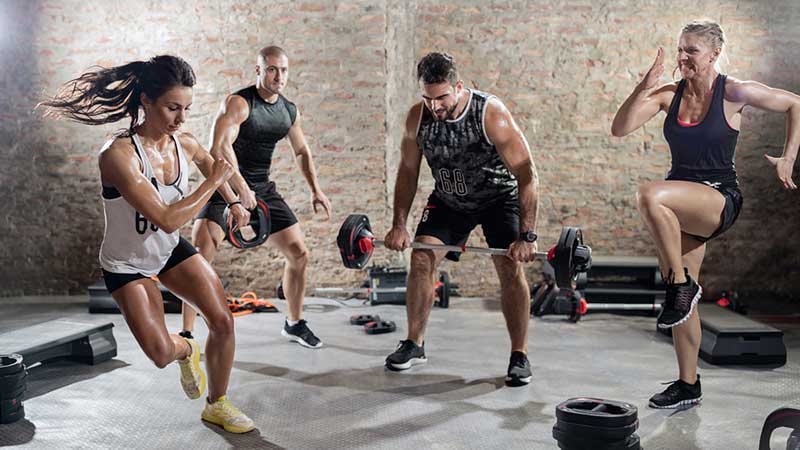
Addressing Concerns and Safety Precautions
HIIT and heart health
While HIIT has been shown to have significant cardiovascular benefits, individuals with pre-existing heart conditions or certain risk factors should exercise caution. If you have any cardiovascular concerns or a history of heart-related issues, it’s crucial to consult with your healthcare provider before starting a HIIT program. They can assess your individual risk factors and provide guidance on appropriate exercise intensity and duration.
Impact on joints and muscles
The high-impact nature of some HIIT exercises, such as jumping or sprinting, can place stress on your joints and muscles. If you have joint issues or are prone to injuries, it’s essential to modify exercises and choose lower-impact alternatives. For example, instead of jumping squats, you can perform regular squats or choose exercises like step-ups or lunges. Additionally, practicing proper form, using appropriate footwear, and gradually increasing the intensity and volume of your workouts can help minimize the risk of joint or muscle injuries.
Adapting for beginners and older adults
HIIT workouts can be modified to accommodate beginners and older adults who may have limitations or reduced fitness levels. Starting with shorter work intervals and longer rest periods can help individuals gradually build their strength and endurance. Low-impact exercises, such as marching in place or modified push-ups, can be incorporated to provide a safer option for those with joint issues or mobility limitations. As always, consult with a certified fitness professional to customize a HIIT program that meets your specific needs and abilities.
Pregnancy and HIIT
If you are pregnant, it’s essential to exercise caution and seek guidance from your healthcare provider before engaging in any high-intensity exercise, including HIIT. While some pregnant women may be able to continue with modified HIIT workouts, it’s important to prioritize the safety of both you and your baby. Depending on your health status and any potential complications, your healthcare provider can advise on suitable exercises, intensity levels, and any necessary modifications. Always listen to your body and consult with your healthcare provider throughout your pregnancy journey.
Medical conditions and suitability for HIIT
Individuals with specific medical conditions, such as diabetes, obesity, or chronic illnesses, should consult with their healthcare provider before starting a HIIT program. Certain medical conditions may require modifications to exercise intensity or duration to ensure safety and maximize benefits. Your healthcare provider can provide customized recommendations based on your condition, current fitness level, and specific goals.
Incorporating HIIT into Your Fitness Routine
Finding balance with other forms of exercise
To create a well-rounded fitness routine, it’s important to balance your HIIT workouts with other forms of exercise. While HIIT offers numerous benefits, it primarily focuses on cardiovascular fitness, calorie burn, and muscular endurance. Consider incorporating strength training exercises to build muscle mass, improve bone density, and enhance overall strength. Additionally, include low-intensity cardio exercises or flexibility training to promote active recovery, improve joint mobility, and reduce the risk of injury. By diversifying your workouts, you can achieve a balanced, comprehensive fitness routine.
Integrating HIIT with strength training
HIIT and strength training can complement each other to create a powerful workout routine. By combining high-intensity intervals with resistance exercises, you can improve cardiovascular fitness, build muscle, and burn fat simultaneously. For example, you can incorporate bodyweight exercises like push-ups or lunges into your HIIT routine or use dumbbells or resistance bands during your interval sessions. By alternating between intense cardio bursts and strength exercises, you create a challenging and dynamic workout that targets multiple aspects of fitness.
Combining HIIT and yoga or Pilates
If you enjoy the mindful movements and flexibility training of yoga or Pilates, it’s possible to incorporate elements of these practices into your HIIT routine. Adding yoga or Pilates exercises as a warm-up or cool-down can help improve flexibility, balance, and core strength. Alternatively, you can dedicate separate days to HIIT and yoga/Pilates or consider hybrid classes that combine both modalities. This combination can provide a holistic approach to fitness, promoting strength, endurance, flexibility, and relaxation.
Using technology and apps for tracking progress
Technology and fitness apps can be valuable tools for tracking your progress and enhancing your HIIT workouts. Many fitness trackers, smartwatches, or mobile apps offer features like heart rate monitoring, workout timers, and tracking capabilities. These tools can help you measure the intensity of your workouts, monitor your rest intervals, and track your progress over time. Incorporating technology into your HIIT routine can provide additional motivation, accountability, and a way to celebrate your accomplishments.
Joining group HIIT classes or online communities
If you enjoy the motivation and camaraderie of group workouts, consider joining a group HIIT class or participating in online communities. Group classes allow you to exercise in a supportive environment, under the guidance of a certified instructor. The energy and encouragement from fellow participants can help push you to new limits and make your workouts more enjoyable. If attending in-person classes is not possible, online HIIT communities and platforms offer a virtual space to connect with others, access workout routines, and seek support and guidance from like-minded individuals.
Conclusion: Embracing the Power of HIIT
High-Intensity Interval Training (HIIT) has risen in popularity for good reason. The benefits of incorporating HIIT into your fitness routine are undeniable. From increased calorie burn and improved cardiovascular fitness to time-efficiency and muscle preservation, HIIT offers a comprehensive approach to fitness. Backed by science, HIIT engages mechanisms such as elevated heart rate and oxygen consumption, the afterburn effect, hormonal responses, increased mitochondrial capacity, and improved glucose metabolism. By customizing your HIIT workouts with appropriate exercises, work-to-rest ratios, and progression strategies, you can tailor your routine to your individual needs and fitness goals.
While HIIT presents immense benefits, it’s important to avoid common mistakes, prioritize safety, and seek guidance when needed. By addressing concerns, incorporating HIIT with other forms of exercise, and embracing technology and community support, you can fully embrace the power of HIIT and enjoy its versatility, efficiency, and effectiveness. With its continued popularity and future trends, HIIT is here to stay as a transformative fitness approach for individuals looking to improve their overall fitness and well-being.
Maximize Your Home Workouts with the Right Equipment and Accessories(Opens in a new browser tab)
Maybelline Fit Me Fresh Tint Foundation SPF 50 Review(Opens in a new browser tab)
Bodyweight Exercises: The Ultimate Home Workout Guide(Opens in a new browser tab)


